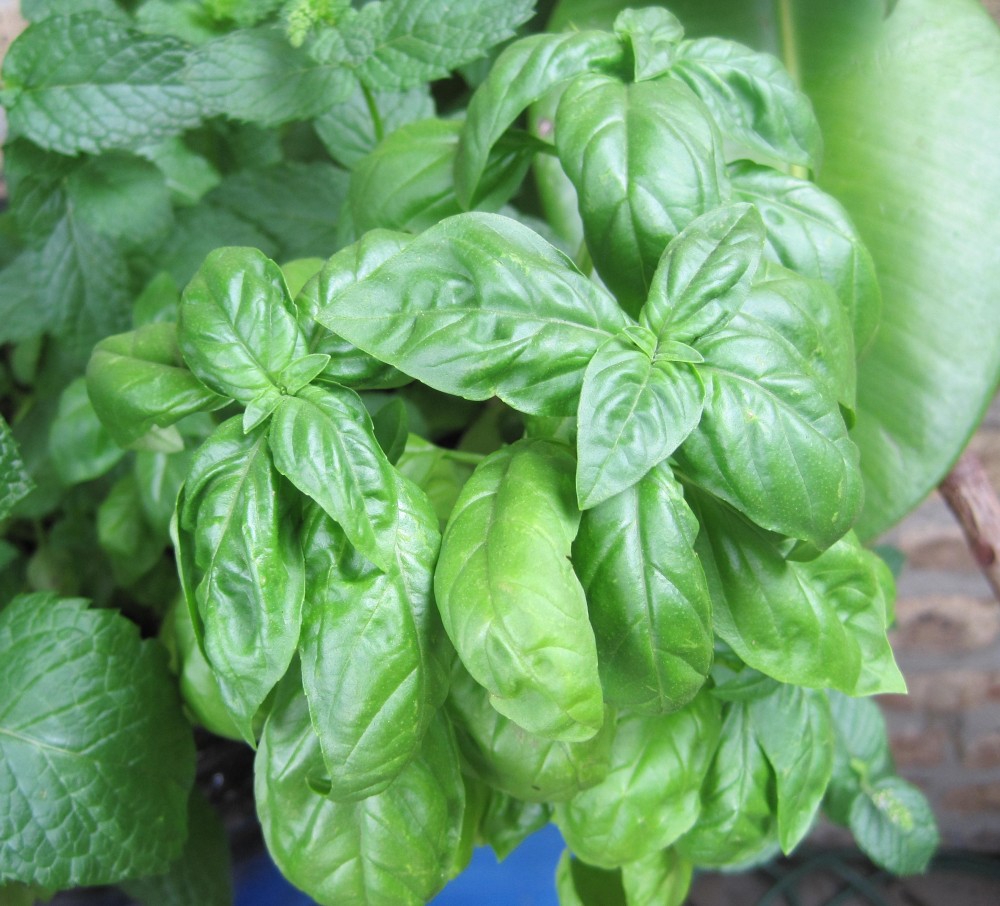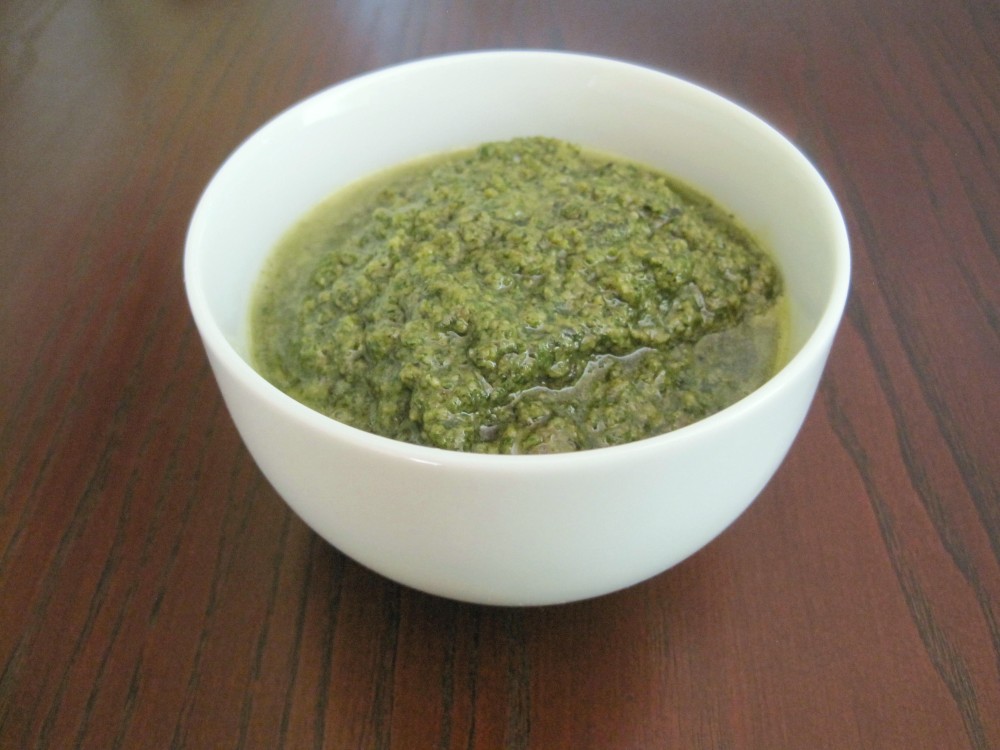Every year we buy two sweet basil plants. They are easygoing herbs and ask for little. They withstand storms and seem impervious to bugs. The basil flourish, and right around this time each year, the plants delight in flowering and producing seeds, wanting to continue their enchanting circle of life. But we frown when our plants want to propagate, and he says things like, “You know, we really should do something about the basil. It’s out of control.”
I promise to make pesto but do not commit.
He continues, “Just the other day, I pinched off a bunch of flowering tops to prevent the basil from going to seed.” More hinting. And then, for encouragement, “Remember last year when you made pesto? It was really good.”
Now I have to commit and say that I will buy cashews. That’s right. Cashews.
In Under the Tuscan Sun, Frances Mayes is delighted to discover that the pine trees from which the pinoli come are plentiful. Clusters of trees line driveways and front yards and cones litter the ground:
“He points to the dusky beads scattered all over the driveway . . . Better still, I think, pesto to make with all the proliferating basil that resulted from sticking six plants in the ground. I love pine nuts on salads. Pine nuts! And I’ve been stepping on them.”
Later that afternoon she extracts them from their shells:
“After half an hour of banging pine nuts, I have about four tablespoons. My hands are sticky and black. No wonder the two ounce cellophane bags are so expensive.”
For purists, pesto is made with pine nuts and basil. But pine nuts are expensive here as well, and it seems that delicoius pesto can be made with any number of nut and herb combinations, including cashews, walnuts, or pistachios. After all, pesto is derived from the Italian root pestare, “to pound, to crush.” A friend suggested that adding cashew to pesto could be my way of paying homage to my Indian roots.
To which I say . . . sure, why not?
Basil Cashew Pesto
I adapted Mark Bittman’s Basic Pesto recipe, from his How To Cook Everything book. Bittman is flexible about making pesto, noting that any number of hard cheeses might be used, and that the amount of olive oil needed really depends on the consistency desired. A good food processor is invaluable.
I used 4 cups fresh basil and 1/4 cup of roasted cashews and modified the amount of oil. Dry toasting garlic cloves in their skins on a skillet before adding them to the pesto mellows any acrid or overly pungent garlicky aftertaste.
Ingredients for Basic Pesto (Makes 1 cup)
2 cups loosely packed fresh basil leaves, big stems discarded, rinsed and dried
1-2 cloves garlic, crushed or chopped
2 tablespoons pine nuts, lightly toasted in a dry skillet
1/2 cup extra-virgin olive oil or more
1/2 cup freshly grated Parmesan or other hard cheese (optional)
Place nuts and garlic in a food processor. Pulse for 10-20 seconds. Add remaining ingredients and half of the oil. Pulse, scraping down sides periodically. Add remaining oil and cheese and pulse until desired consistency is achieved. And presto! — sunny basil and buttery nuts and cheese to spread or mix as you like.


One Comment Add yours